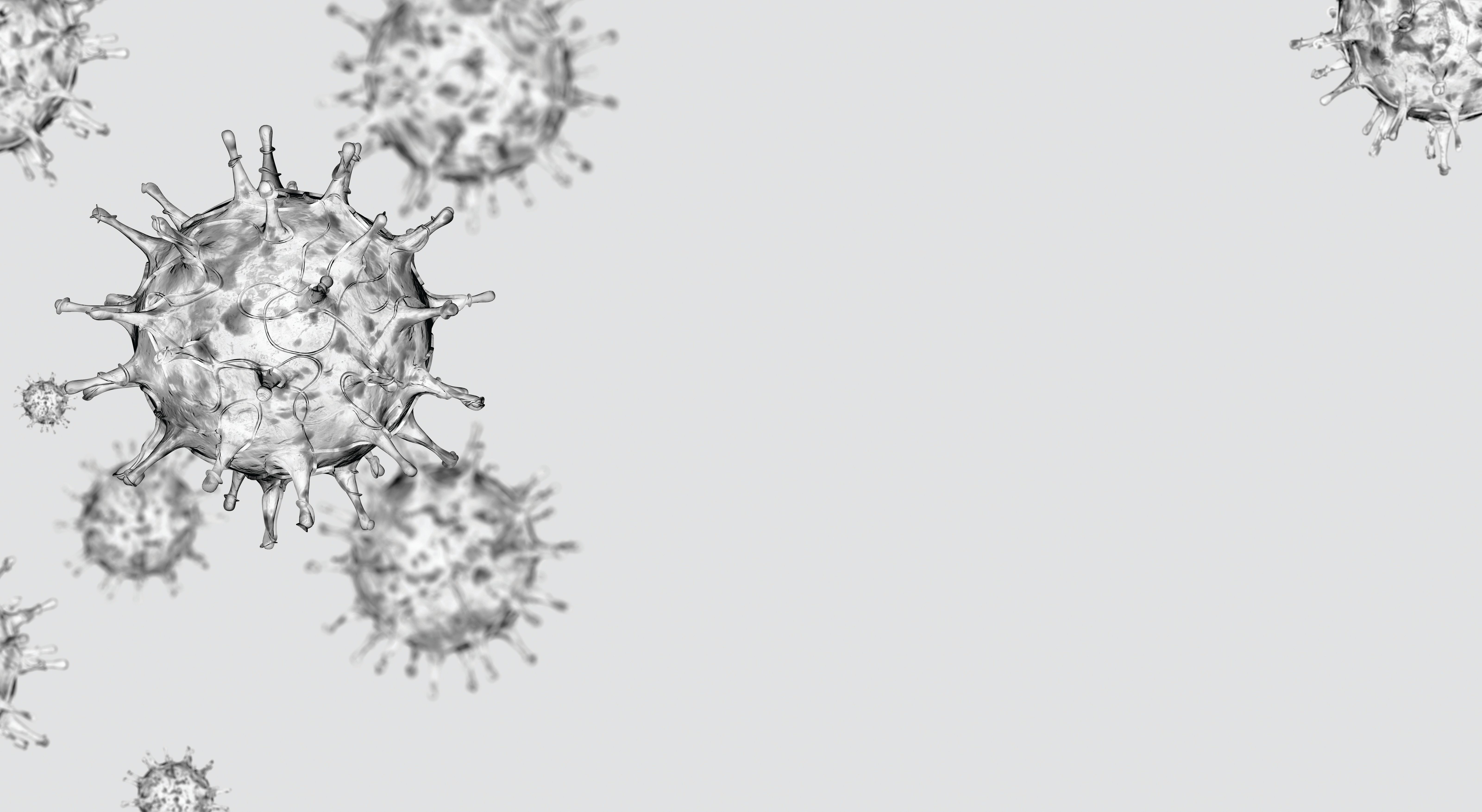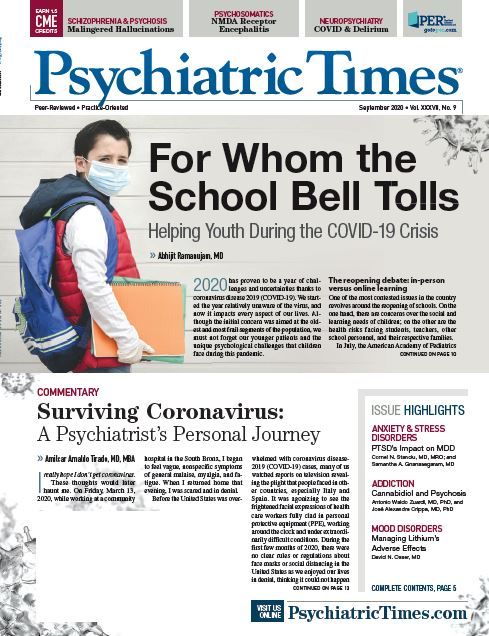Publication
Article
Psychiatric Times
Delirium, Encephalopathy, and COVID-19: An Update From the Field
Author(s):
The biggest challenge we have faced thus far has been a three-fold rise in requests for assistance in managing persistent delirium. Needless to say, we are not twiddling our thumbs.
Levan/AdobeStock

“You guys must be twiddling your thumbs these days, huh?” This was the ill-informed question posed to me by one of our outpatient primary care doctors moonlighting as a hospitalist in this “all-hands-on-deck” time of ours. I looked at him and only laughed.
During the early stages of COVID-19 in my state of Massachusetts, we experienced frequent emergency department referrals of brief psychosis related to severe anxiety in the context of what was then COVID-19 anticipation.1 Now that we are in a full-blown surge, the 2 most striking pathologies we are seeing on the medical side are a much greater volume than usual of refractory delirium, both in COVID-19 and patients without-COVID-19, punctuated by less common but puzzling cases of persistent encephalopathy seemingly related to COVID-19 infection.
The biggest challenge we have faced thus far has been the requests for assistance in managing persistent delirium. These have increased about three-fold and continue to rise. The requests have been split roughly in half between patients with COVID-19 and those without COVID-19, mirroring where we are at this point with regard to inpatient populations, with actually only about a quarter having been intubated at some point in the ICU. Almost all the patients are older than 75, and about three-quarters are male. About three-quarters have pre-existing cognitive decline. About a quarter are non-native English speakers. Many have required significantly higher doses of antipsychotic medications than are typically prescribed. Most have required augmenting agents such as anti-epilepsy drugs, benzodiazepines, barbiturates, dexmedetomidine, opiates, and/or ketamine.
The question, of course, is why are these cases so refractory? Never in my experience have we had to resort to such trial and error, and really for the safety of the patients and staff, as many patients have been unwittingly violent.
We have collected the following contributors to this phenomenon:
1The hospital has not been allowing any visitors. There have been no family or other social supports at the bedside on a consistent basis to orient and reorient patients appropriately.
2Staff are required to wear masks at all times. On the medical and surgical floors, most are wearing much more, including all manner of goggles, face shields, and surgical caps. In other words, every person these patients see looks like something out of a science fiction movie. There are no faces to read and no way to gain a sense of the situation.
3There is no touch. I never noticed how much I touch older patients until now. We all catch ourselves as we instinctively reach to touch a shoulder, to hold a hand, to press someone back down gently into bed. None of this happens any more.
4 The lack of technological experience in the older population has made communication between patients and their spouses, siblings, and peers difficult. Many family members with whom we have spoken do not have smartphones or computers. This has also made applications for Medicaid and other assistance exceedingly slow and difficult to arrange.
5 Closure of the courts impacts care. Court closures have delayed cases of guardianship, thereby lengthening duration of hospital stays.
6 The language barrier complicates matters.Obviously, language issues make the experience that much more isolating.
7 Staff fatigue and burnout are evident. Both are playing a role in care, as there seems to be little patience for agitation and confusion. The immediate requests for assistance are invariably for sedating medications.
8 Bottlenecking on discharge continues to be a problem. With the COVID-19 crisis, there have been very few available skilled nursing facilities and long-term care facilities for patients. This also results in much longer hospital stays.
Persistent encephalopathy, although much less common than the delirium, has been more difficult to explain and thus far unresponsive to all attempted treatments. The 5 cases we have seen were aptly described by an ICU team as “different than the typical different we have been seeing.” (This piece explores the 2 earliest cases, but all cases have been similar.) In the 2 earliest cases, the patients were admitted for COVID-19 infection with subsequent complications. One patient was female in her late 50s, and the other was male in his early 60s. Both patients had significant psychiatric histories with previous psychotic symptoms and had been on longstanding chronic antipsychotic medications. The patients were both intubated during their respective hospital courses—3 days for our female patient and 3 weeks for our male patient—and both required tracheostomy due to complications. Both had type 2 diabetes, hypertension, and chronic obstructive pulmonary disease, and both were smokers. They both had been living in skilled nursing facilities and had previous strokes. The patients had remote substance use history, having used alcohol and cannabis. At baseline, prior to their hospitalizations, both had been fully cognizant and conversant as well as fully ambulatory with only minimal motor deficits.
The differences in their behavior were noted soon after extubation. As their pulmonary function improved and organs generally recovered, they remained mentally altered, mostly staring off and non-interactive. The patients appeared conscious and awake, but they would not eat or drink on their own nor would they respond to any commands. Their pupils were sluggish but reactive, but their eyes could not track. They had intermittent episodes of rigidity, mostly in their upper extremities and neck. The differential included stroke, status epilepticus, catatonia, hypoactive delirium, and neuroleptic malignant syndrome (their antipsychotic medications had been discontinued abruptly in the setting of treatment with hydroxychloroquine and azithromycin due to risk of QTc prolongation). Inflammatory markers were persistently elevated, consistent with COVID-19 infection as well as neuroleptic malignant syndrome. Vital signs were unremarkable.
Stroke and seizure were ruled out. Further infectious causes were ruled out. Metabolic causes were ruled out. Antipsychotics were held, and empiric treatment with lorazepam and bromocriptine were initiated. Some improvement was noted in rigidity, but nothing else. Gradual reintroduction of antipsychotics had no effect. Inflammatory markers stabilized, but there was no improvement in mental status. Both patients are still with us, but they are vegetative, on total parenteral nutrition, now total care, and are awaiting long-term care placement.
At this point the differential includes anoxic brain injury due to complicated intubation, chronic delirium, or direct neurotoxic effect of the COVID-19 virus on the brain. There are similar case reports, but presently these cases remain a mystery.2,3
Other issues with which the psychiatry consultation-liaison service is contending are the management of acute substance withdrawals in critically ill patients with COVID-19 (often mimicking symptoms of the illness itself), collaborating with our palliative care colleagues in determining the futility of care, and the management and placement of patients who are psychiatrically decompensated and COVID-19-positive (but asymptomatic) for whom there are very few placement options.
We are not exactly twiddling our thumbs. In my particular hospital, we have been working inspiringly, tirelessly, and exceedingly well together throughout this crisis.
Dr Martin is director of medical psychiatry, Newton-Wellesley Hospital, Newton, MA, and clinical assistant professor of psychiatry at Tufts University School of Medicine, Boston.
References
1. Martin Jr EB. Brief psychotic disorder triggered by fear of coronavirus? Psychiatric Times. May 8, 2020; Epub ahead of print. https://www.psychiatrictimes.com/coronavirus/brief-psychotic-disorder-triggered-fear-coronavirus-small-case-series
2. McNamara D. Neurologic symptoms and COVID-19: what’s known, what isn’t. The Hospitalist. April 6, 2020. Accessed August 10, 2020. https://www.the-hospitalist.org/hospitalist/article/220289/coronavirus-updates/neurologic-symptoms-and-covid-19-whats-known-what
3. Wu Y, Xu X, Chen Z, et al. Nervous system involvement after infection with COVID-19 and other coronaviruses. Brain Behav Immun. March 30, 2020; Epub ahead of print. ❒







